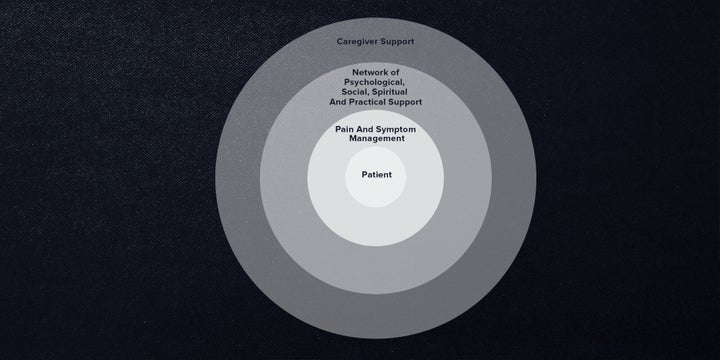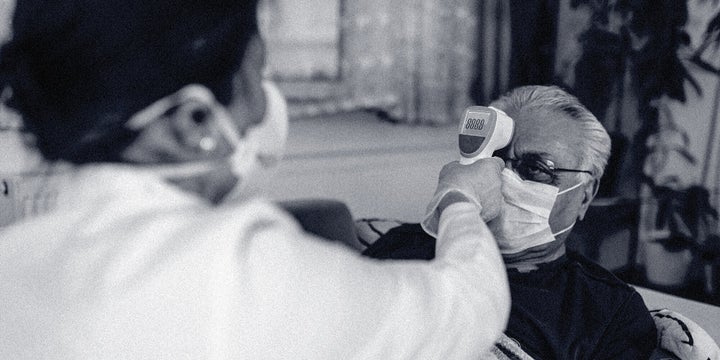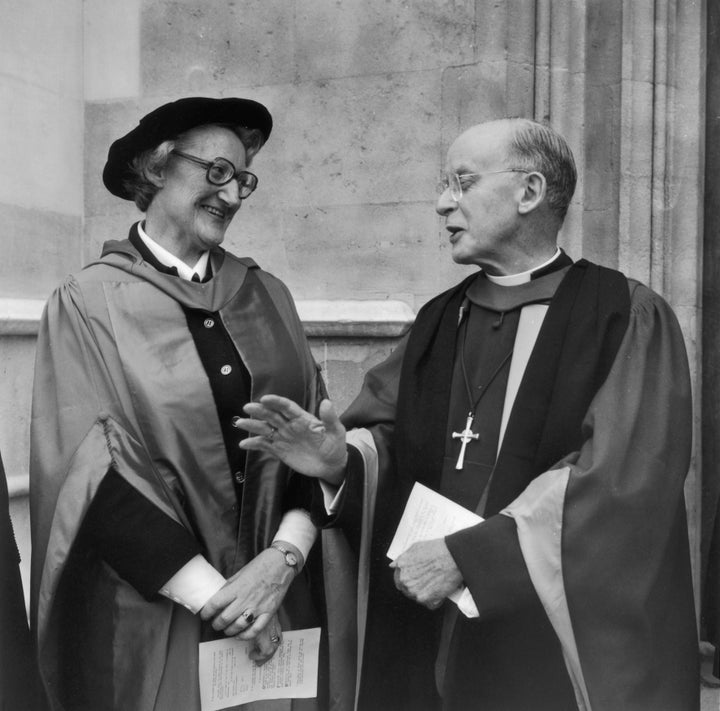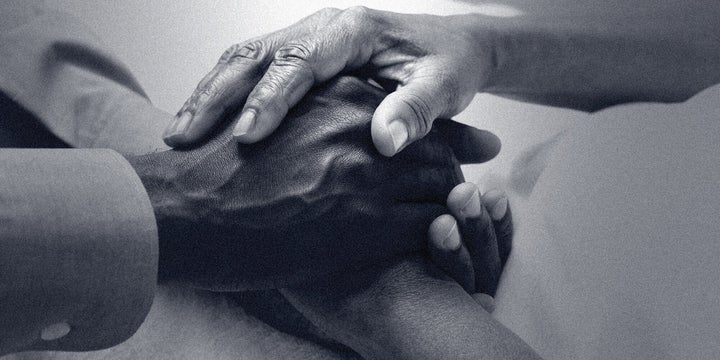
OTTAWA — In the thick of the pandemic, Dr. Paul Hacker drafted a palliative care plan to manage a patient’s physical and emotional pain that his grandchildren were going to forget about him after he was gone. The man was dying from amyotrophic lateral sclerosis — more commonly known as ALS or “Lou Gehrig’s disease” — a terminal condition that has no cure. Separated by physical distancing rules, backyard visits were arranged so that the grandfather and his grandchildren, ages three, eight and 10, could enjoy each other’s presence from a two-metre distance.
Hacker, an Ottawa-based palliative care physician, said it was “very hard” for the man, whose ALS was progressing rapidly, to maintain physical separation from his grandchildren. Video chats were organized and, in between calls, the patient made scrapbooks and prepared messages so the kids could remember him.
As the degenerative disease severed connections between the man’s brain and muscles, the world became engrossed by the COVID-19 news cycle. He began losing his ability to speak. The disease continued to rob his body of its basic functions. The grandfather, who can’t be identified because of patient confidentiality, died mid-April. Days after his death, Hacker told me the case crystallized a new set of challenges currently facing palliative care doctors. In addition to the physical symptoms of his patient’s disease, it was isolation that caused the “most distress,” he explained. “We did what we could.”
Devastating cancer diagnoses and critical diseases do not stop for a pandemic. Approximately 270,000 Canadians die each year, according to government data, 90 per cent due to a chronic illness. An estimated 1,000 people die annually from ALS. Meanwhile, cancer is Canada’s leading cause of death. About 225,800 people will be diagnosed with it this year, according to the Canadian Cancer Society, with 83,300 expected to die from it. Heart disease is the country’s second-leading cause of death.
Some will beat the aggressive diseases they’ve been diagnosed with. Others, despite careful treatment plans, will die non-COVID-19 related deaths during the pandemic. But when the conversation between patient and doctor shifts to end-of-life planning, life expectancy from that point on can mean years, not just weeks and months, explained Sharon Baxter, executive director of the Canadian Hospice Palliative Care Association.
“Most Canadians would like to die at home or at least stay at home as long as possible,” she said. “So we need to do a better job of providing community-based or home-based care.”

Three-quarters of Canadians would prefer to die at home, but only 15 per cent have access to palliative home care services, according to a 2018 Health Canada report. That same year, Statistics Canada released data showing the number of people over the age of 80 is expected to more than double to 3.3 million by 2036. Unless changes are made, aging baby boomers living with advanced illnesses will face significant gaps in palliative care access.
These figures, taken in stride with news of the deadly coronavirus outbreaks in long-term care homes, underline the need for governments to review and update health-care strategies.
In 2017, the federal government pledged $6 billion over 10 years to improve home care services, including palliative care. The Liberals were re-elected to a second mandate, promising to “make home care and palliative care more available across the country.”
On top of the pandemic shining a spotlight on problems in long-term care home systems, where outbreaks have accounted for half of Canada’s COVID-19 deaths, some family caregivers are feeling increased stress taking on more day-to-day personal care responsibilities for sick and aging loved ones in light of the cancellation of non-urgent home-care visits. Good home care is reliant on access to professional, skilled support and equipment. Palliative care doctors who work outside hospitals told me that they’re concerned about the availability of ventilators. One said asking for help buying infusion pumps and bed pans isn’t an inherently “sexy” funding request that gets governments’ attention.
Public awareness is a major barrier to increased access to better palliative care. Death and dying just isn’t a hot topic of conversation. Though medical studies have shown patients assigned early palliative care can have “significant improvements” in mood and quality of life, funding in this area of health care isn’t always considered a top priority.
Hospices, where the sick and terminally ill stay for an average of 18 days, have come to rely on charity events and donations to cover the gap in operating costs in some jurisdictions, Baxter explained. Ottawa Hospice Care is a charity that provides palliative and end-of-life programs and services to patients and their families, but government funding only covers 60 per cent of its costs. Its biggest fundraiser, an annual hike, has been cancelled this year because of the pandemic. “Small charities do not have the reserves to withstand losses of this scale,” Baxter said.
What is palliative care?
Palliative care is a form of specialized health care that seeks to remove suffering and improve the quality of life for patients living with a life-limiting illness or disease.
To understand the holistic philosophy behind palliative care, imagine three concentric circles with one person, the patient, in the middle. These are all rings of support. Now move outward. The first focuses on pain and symptom management. That’s where a palliative care doctor’s medical training kicks in. The second ring puts attention on a patient’s network of psychological, social, spiritual and practical support. Emotional support and social engagement from family, friends or religion play a special role here. The last circle is caregiver support. Depending on the severity of the disease, a patient may no longer be able to care for themselves, and become increasingly reliant on support workers for meals and personal care. It’s incredibly demanding work — one in three caregivers report stress and burnout. The pandemic has put strain on all three rings.

A recent article published in the Canadian Medical Association Journal (CMAJ) warned, “In a viral pandemic, we expect the need for palliative care to increase substantially … A quiet and peaceful environment is recommended to support patient dignity in the last hours and days of life.”
Patient loneliness is a big issue on many palliative care doctors’ minds. Visits have gone virtual, which is a technical advancement that has brought new challenges in how doctors build trust with their patients entering palliative care. In-person check-ins are now decided based on urgency and available personal protective equipment (PPE).
Drug shortages are also a concern, which pre-date the pandemic. The drugs and go-to medications used by doctors to respond and manage rapidly escalating symptoms for patients at the end of their lives are also being stockpiled in hospitals for people with severe cases of COVID-19 to assist patients on ventilators, and to control pain and shortness of breath.
* * *
Dr. Brian Berger takes every precaution not to bring the novel coronavirus into his home after each hospital shift. The South African-born physician leads the palliative care unit at Mackenzie Health Hospital in Richmond Hill, Ont. He visits staff and patients every day. Under ideal conditions, some research suggests the virus can live on clothing for up to three days. When Baxter comes home now, he no longer enters through the front door to kiss his wife hello. He goes through the garage where he strips down and tosses his clothes for a hot wash in the laundry, then heads inside and upstairs to shower before interacting with anyone, including the family cockapoo, Buddy.
“I don’t look at death as a failure, but I look at a comfortable death as a success.”
- Dr. Brian Berger , palliative care physician
Since 1980, Berger has spent the bulk of his career split between family medicine and palliative care. But entering the “twilight” of his career three years ago compelled him to dedicate himself to palliative care full time. He described the work as “very satisfying,” allowing him special access to a “window into a lot of emotions and cultural norms.” Although the nature of his work is inevitably death, he described the times where he’s able to help facilitate good end-of-life care for a patient as rewarding. “I don’t look at death as a failure, but I look at a comfortable death as a success.”
A good death, to him, is one that’s free of pain, having a minimum amount of discomforting symptoms, and being surrounded by people or things they love.
Challenges in home care for doctors
COVID-19 has dominated the news for what feels like too long. The shortage of PPE continues to be a top concern for government and health-care workers on the front lines of the COVID-19 crisis. Sourcing PPE, especially for palliative care doctors who tend to patients outside of hospitals in home care, has become its own challenge.
Palliative home care has been a lower priority than long-term care has been, Hershl Berman, a Toronto-based palliative care physician, told me. As a home-care doctor, his supply of PPE doesn’t come from a hospital. The items he and his team have been using are a combination of old (disposable gowns) and expired gear (N95 masks) left over from the SARS epidemic, plus donations from the community. It’s whatever they can get their hands on.
“We’re getting donations from tattoo parlours, aestheticians, dental offices,” he said, adding a pharmacist in Brampton, Ont. also contributed.
Insufficient PPE supply for palliative care doctors, nurses and support workers means a reduction in the number of in-person visits with patients. You have to assume that every patient could be positive, Berman said. Gloves, gowns and masks are tossed after every use. The face shields and goggles are meant for one-time use, but because PPE has become a scarce commodity, they’re being washed with soap, hot water, and treated with some disinfectant for reuse.
For doctors and support workers making home visits, one of the biggest challenges is putting on and taking off PPE without contaminating themselves in the process. Berman said the procedure is particularly difficult in apartments given all the communal surfaces in the building.

Susan MacDonald, an associate professor of medicine at Memorial University of Newfoundland, feels that PPE pain. When the palliative care doctor makes a rare pandemic-era home visit, she’s had to figure out ways to put on her protective gear in between her car and a patient’s front door, all the while dealing with Newfoundland’s wild, windy and rainy weather.
The former president of the Canadian Society of Palliative Care Physicians has made some observations in her 25 years working in the field. Though the coronavirus pandemic has encouraged health-care colleagues to learn more about palliative care, and training has been made more widely available in the wake of COVID-19, its evolution continues to be stunted by the stigma hardwired into the topic of death.
As human beings, MacDonald said, we are very uncomfortable with the notion of death and primed not to be happy over the thought of dying. “And so what do we do? We constantly avoid it. We put all our money into cure. Take a look at the massive telethons that we have for all sorts of things that raise millions and millions of dollars — and nothing on palliative care.”
“We are very much a youth-oriented society, a beauty-oriented society, and we do not venerate our elders, and we do not talk about death.”
- Dr. Susan MacDonald
How we talk about the end of life is in need of a change in order to evolve palliative care. “We are very much a youth-oriented society, a beauty-oriented society, and we do not venerate our elders, and we do not talk about death,” MacDonald said. The pandemic has raised the stakes because the fear of getting sick with COVID-19, and suddenly dying from it, has made the thought of death more omnipresent in our day-to-day lives.
The biggest barrier to palliative care, as it has been for “eons,” MacDonald explained, is the perception that it’s a death service rather than a symptom-management service. Before the pandemic, she said she had a patient who asked for “very aggressive” treatment for his cancer. He was miserable.
“And when you spoke to him and said, ‘What are you living for?’ He said, ‘I have to see my first grandchild being born. I have to see that.’” After speaking to the daughter, who had months to go in her pregnancy, MacDonald concluded “there was no way” he was going to make it that long, given his prognosis. So she brought in an ultrasound technician, as well as the daughter. “He was able to see the baby. And after that happened he was able to make some decisions about what he really wanted, which was a peaceful and dignified end of life.”
A palliative care doctor isn’t just responsible for managing physical pain. Hacker, whose patient died from ALS in April, said he’s arranged Christmases in March and July for patients fixated on the hard truth they weren’t going to live long enough to revel with family and friends for their favourite holiday one last time. That part of his workload isn’t necessarily traditional doctor’s work, he joked, adding caring about his patient’s emotional well-being at the end-of-life is part of his job, too. “Who cares what the calendar says,” he said. “Celebrations can be moved.”
* * *
Modern palliative care has three areas of focus: the management of symptoms; the discussion of advance care planning with patients by going over their values, expectations and wishes; and supporting the care network a patient will leave behind.
The spirit of palliative care goes back to the fourth century when early Christians in Europe created hospices to care for the impoverished and sick. The first modern hospice opened its doors in the 1960s in southwest London.
That pioneering effort is credited to the late Dame Cicely Saunders, a social worker and physician. Born in 1918, Saunders defied her parents’ expectation that she attend Oxford to become a secretary to a British member of Parliament, and instead became a social worker. Along the way, she became a committed Christian, which instilled in her a desire to serve. It was through her work helping the poor that she met David Tasma, a 40-year-old man dying in a hospital, with no family. They clicked and connected on a spiritual level. Through their discussions, according to the British Medical Journal, they talked about establishing a home for dying people to help them “find peace in their final days.”

Through close friendships with her patients, it became increasingly clear to her that outside of hospital and hospice walls, a patient is, more often than not, a member of a symbiotic network of support. She founded St. Christopher’s Hospice in 1967, shortly after becoming a doctor. It was named in honour of the patron saint for travellers.
In a 1983 television interview, Saunders was asked if most people want to know if they’re dying. “I don’t think that anybody really wants to know that. Nobody wants to have bad news,” she said. The idea of “total pain” as inclusive of emotional, physical, social and spiritual elements is a concept she advocated. Saunders argued the environment surrounding a dying patient, the availability of emotional support and physical comfort for patients, their friends and family, as well as for caregivers, directly impact the quality of palliative, end-of-life and terminal care.
“You come to realize, by what’s happening in your body, by how people around you are behaving, by the things they don’t say as much as what they do say. But the body has a wisdom of its own. And if you can manage to say yes to the ending of life, almost in the same in the same way as you say yes to the other things that happen in life, then it can open up — and the strengths and the possibilities of that time can be made more apparent. And I think it’s rather like the rest of life: If you deny a problem, you don’t actually tackle it.”
‘People need a village to die at home’
Starting those hard conversations is part of a palliative care doctor’s job — sussing out which environmental and psychological stressors a patient could be feeling and responding to — and designing a care plan to palliate the symptoms.
With physical distance measures in place to encourage people to stay home in an effort to flatten the COVID-19 infection curve, palliative care doctors are also feeling environmental and psychological stressors. It’s a new reality that Ottawa physician Regine Krechowicz is still adjusting to. “The job that I love just doesn’t exist right now.”
On what’s changed since before the pandemic, she said “the saddest difference is that people are dying much more alone.” The home-care doctor quipped on some days she feels like a web technician who can write prescriptions.
The former rural family doctor specialized in palliative care two years ago and up until recently, she met new patients in-person. It’s important to establish trust with new patients, so she would sometimes spend two hours with someone for an initial consult. Being in a patient’s home has advantages, Krechowicz explained. Non-verbal cues can help a doctor offer “gentle signposting” to help prepare families for what’s next.
“There might be something subtle in someone’s breathing that tells me, OK, we talked about this yesterday that there might be weeks but what I’m seeing today is that the time can be shorter.” She said during video calls, it can be hard to tell if support workers or family caregivers have burnout. “People usually don’t come out and say, ‘I am burnt out,’ right? It’s like a feel in the house that you can get.”
With physical distancing measures in place, it’s hard for family caregivers to arrange brief relief of their home-care duties. Timing has been particularly cruel for some families. One patient’s children couldn’t come from Calgary to say goodbye to him, Krechowicz said of a man who was recently under her care in Ottawa. “People need a village to die at home.”

Doctors are hopeful the pandemic can at least push people to talk about advance care planning for the end of life. One told me, quite frankly, that it’s hard to verbalize your wishes if you’re suddenly intubated. By then it’s too late.
In Canada, provinces and territories are not required to follow a national palliative care strategy — because there isn’t one. That’s not to discount efforts made in the past to develop a federal policy. Prime Minister Jean Chrétien appointed Manitoba senator Sharon Carstairs to cabinet in 2001 as minister with special responsibility for palliative care. In 2015, a milestone was reached when the Supreme Court of Canada overturned a ban on medical assistance in dying (MAiD). Legislation passed the following year made it legal — and it’s now subject to new changes.
Palliative care and how to improve it was discussed by the House of Commons health committee two days before the World Health Organization declared the novel coronavirus outbreak a pandemic back in March. Christina Lawand, senior researcher at the Canadian Institute for Health Information (CIHI), appeared as a witness at the committee. Bloc Québécois MP Luc Thériault asked her if palliative care has been identified as the “gold standard” for dying with dignity for the past 50 years, what needs to be done to make it more accessible?
More medical training is needed, Lawand said, explaining that three in five doctors say they don’t feel ready to provide palliative care, despite 80 per cent of them seeing patients who need it. “The problem is that the patients’ need for palliative care is established only when their curative treatments are finished. Their situation can deteriorate very quickly and it is then too late to implement palliative care in the community. That’s why we see a lot of emergency room visits and hospitalizations.” CIHI data suggests in 2018-19, approximately 15 million visits were made to emergency rooms across Canada.
“I’m a bit worried that it’s quieter than normal.”
- Dr. Jessica Simon, associate professor of palliative medicine, University of Calgary
With no COVID-19 vaccine yet, the novel coronavirus is still untamed. Fear is having an effect on people and their willingness to go to hospitals, even for medical-related emergencies.
“Right now, I’m a bit worried that it’s quieter than normal,” said Jessica Simon, an associate professor of palliative medicine at the University of Calgary. “Where are all the people that we normally see who have advanced cancers or advanced heart disease … Is it because people are actually doing OK because there’s more family around and people aren’t working … or are people struggling and suffering home alone … and maybe people aren’t asking for help.”
Home care is not considered an “insured health service” for full government funding under the Canada Health Act, despite federal-level support for the change. A parliamentary committee on palliative and compassionate care report called home care “foundational” to the transformation of the health-care system.
MPs on the committee argued this evolution would make a difference in delivering palliative services to more people, especially in First Nations, Métis, and Inuit communities. It would increase access to effective care while reducing costs, they said. That was nearly a decade ago.
Cheat sheets to learn basics of end-of-life care
The cost of palliative care in the last month of a patient’s life was noted in an Ontario auditor general report in 2014. At the time, expenses ranged from under $100 per day for at-home care; $460 per day for hospice, up to $770 per day in a palliative-care unit, and $1,100 per day in an acute-care hospital bed.
Naomi Goloff, a pediatric palliative care physician by training, thinks home care “110 per cent” should be considered an essential, insured service. In the wake of the pandemic, education gaps are being addressed on the fly. Medical professionals have been teaching each other with ad-hoc palliative care cheat sheets, helping those working at the frontlines in intensive care units to quickly learn the basics of end-of-life care.
Goloff was helping at a nursing home when I called her in late April. She had just wrapped a shift working in a unit for dementia patients who had tested positive for COVID-19 earlier in the month but had now all recovered.
I asked her how she winds down after a rough day. On that particular evening, she said there were “ups and downs.” But in the spirit of trying to make the facility feel like a hospitable place where people are living, they planned a Michael Jackson dance party to celebrate the residents on the floor beating COVID-19.
The staff wore head-to-toe PPE. Residents on the floor joined in. They turned up the music and danced to “Thriller” — a brief, exquisite moment of catharsis. Though they wore face masks and shields, you could see people smiling just by looking at their eyes, Goloff said. The residents were “very much alive.”
Also on HuffPost: